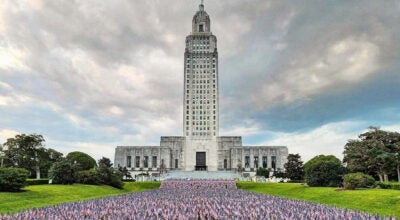Georgia first responders take show on road
Published 12:00 am Tuesday, August 11, 2009
By ROBIN SHANNON
L’Observateur
CONVENT — On Feb. 7, 2008, tragedy struck the community of Savannah, Ga., when a massive explosion rocked a refinery owned by Imperial Sugars. The explosion and subsequent fires injured more than 50 employees at the plant that night —14 of those workers died.
First responders and relief personnel who were called out to the plant in the minutes after the explosion received what amounted to a “crash course” in disaster management at a large industrial facility. Those men and women involved in the response and recovery are now imposing some of that wisdom on other “industry-heavy” communities through a seminar and panel discussion. The tour made a stop last week in St. James Parish, which is home to an Imperial-affiliated sugar refinery in Gramercy.
A large contingent of first responders, relief personnel and industrial plant managers from across the River Parishes and other surrounding areas descended on the town of Convent in St. James Parish to take part in the disaster management seminar hosted by Imperial Sugar CEO John Sheptor.
Sheptor brought with him police, fire and emergency medical officials from the Savannah area so that they could describe the events that transpired during the explosion.
“Imperial was incredibly fortunate to have such a high caliber of response available to our employees in need,” Sheptor said as he addressed those in attendance. “Support for what [first responders] do is critical. I fear in these economic times it is sometimes underappreciated and underfunded. Rest assured I have shared how valuable you were to me, my employees and my company during our darkest day.”
Along with Sheptor, the panel included Port Wentworth, Ga. Fire Chief Greg Long, Memorial Health University Medical Center Critical Care Clinical Nurse Specialist Crystal Logsdon, Savannah/Chatham County Police Chief Michael Berkow and Joseph M. Still Burn Centers President Fred Mullins, M.D. Each member played a pivotal role in the 2008 incident.
Sheptor, who was touring the Savannah refinery on the night of the explosion, led off the discussion recounting his own experience and said he was a phone call away from being right in the middle of the explosion.
“My wife called minutes before the accident,” Sheptor said. “That brief delay prevented me from being at a meeting in one of the nine buildings that collapsed. The firefighters who arrived on scene were able to quickly isolate the fire well enough to save the rest of the plant. The additional rebuild cost would have caused the total claim to substantially exceed the company’s insurance coverage. That gap, in turn, would have forced the company to shut down.”
Chief Long used slides and video to provide a walkthrough of the explosion and fire. He said 22 fire departments responded with 228 firefighters and 74 pieces of fire apparatus.
“There was a tremendous amount of collaboration and cooperation from the guys that responded,” said Long. “Neighboring stations were quick to send supplies and more firefighters out to the site. Not one firefighter was injured in the nine days we were extinguishing the blaze and looking for survivors.”
Long said his crew took a strategic approach in containing the fire, with a necessary element being a detailed map of the entire refinery.
“Plant employees tend to adopt their own names for certain buildings on site,” said Long. “That can pose a serious problem for first responders trying to locate a specific area. A solid map with labels is key.”
The chief also emphasized the need to photograph debris for forensic purposes before it’s removed as well as maintaining 100-percent accountability of persons who have access to the scene, with particular attention to non-emergency responders.
Berkow, who previously served as a detective on the Los Angeles Police Department, emphasized that the time to prepare for any disaster is before it happens.
“Unity in communications and emergency command is essential,” Berkow said. “If you train together, you lead together and, ultimately, you will survive together.”
Berkow said it is vital to have a consolidated dispatch where fire, emergency medical services and police work side-by-side. He said his department handled traffic control of fire trucks, ambulances and water tanker trucks at the refinery.
Sheptor closed the seminar with a reflection on the past 18 months since the disaster. He said the explosion and residual recovery has had a deep affect on many people in the community.
“We hope what we have shared today will allow others to learn without having to experience what we have,” he said, “and will ensure that communities are prepared to respond to a disaster if they are unfortunate to have to.”
Many of the first responders who attended the event said it was time well spent.




